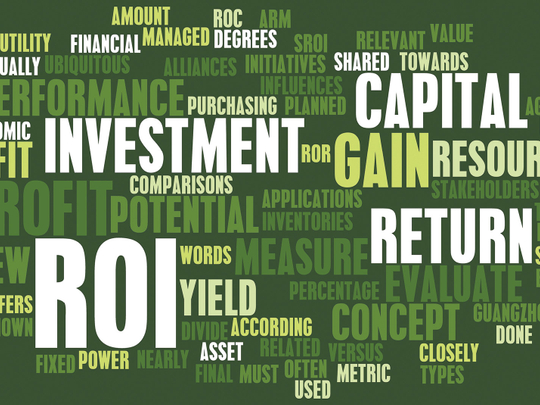
The question that plays on the mind of every amateur property investor, and even some seasoned ones, is whether to focus on capital appreciation or the yield. I suppose a good starting point is to answer the pertinent question: “What is your exit strategy and do you want an instant income from your investment?”
If the answer is “I want to hold for a long time and then sell”, then an investment with good capital appreciation is recommended. If the answer is “I want an instant income”, then a property with a good yield is advisable. If you can get both, then you are on to a real win-win situation, especially if the exit strategy is long term.
Capital appreciation
Capital appreciation is the increase in the market value of the property against the purchase price. For instance, if you bought a property for Dh1 million in 2012 and this year you have the property professionally valued at Dh1.5 million, this is an increase of 50 per cent over six years. So, the capital appreciation is 50 per cent or Dh500,000.
Typically, properties in great locations such as the Palm Jumeirah or Emirates Hills witness capital appreciation. These are the areas of choice for affluent professionals who are willing to pay for their choice. Capital appreciation can also be seen in areas with regeneration or new services being provided. An example is the Metro extension in Dubai. Properties on this route will benefit from the new Metro line and should, therefore, show some capital appreciation.
To summarise, the longer you hold an asset such as property, the better the chances of it showing capital appreciation.
It is the long-game not the short-game win.
Yield
Yield, on the other hand, is usually defined as the rate of return on an investment, but what does that actually mean? Yield is something many investors want as it can provide them with a residual income, especially if they own multiple properties. Yield is worked out by simply subtracting the annual expenses of the property from the annual rental income, and then dividing this result by the total cost of the property. Multiply the result by 100 for the net rental yield percentage.
Here is an example:
If the annual rent is Dh150,000 and you have had repair expenses of Dh16,000, this leaves you with Dh134,000. Divide this figure by the cost of the property (assume it is Dh2 million) and multiply the result by 100 to get the net rental yield, which would be 6.7 per cent.
An important point to note is you may be shown the gross yield, which is only the rental income divided by the cost of the property. In this case it would work to 7.5 per cent.
But always ask for the net yield when looking at investing in a property, as this is the true yield for you, the investor.
The ideal situation then for investors is a combination of strong capital appreciation with strong rental yields. Once you have explored all the options, in all the areas, then you will choose a property that is expected to not only provide you with an extra monthly income, but also good capital growth in 5, 10 or 15 years’ time.
Remember, as with all investments, there are no guarantees and the rental yield and capital growth are estimates based on the current marketplace and housing policies. Many micro and macro events can have a bearing on your calculations.
Derrick Maguire is associate director, head of operations – transactional services at Asteco.











